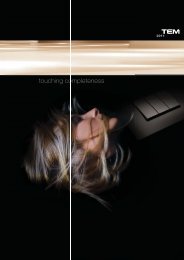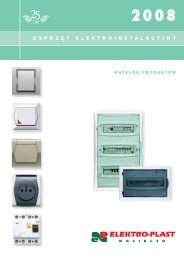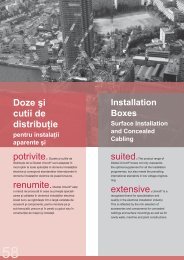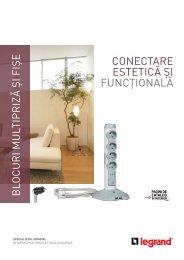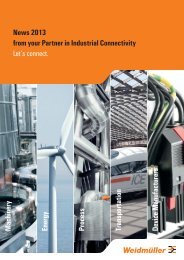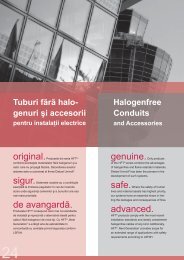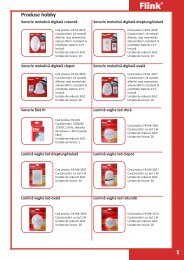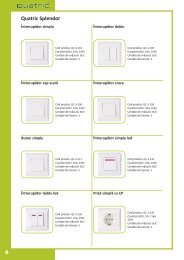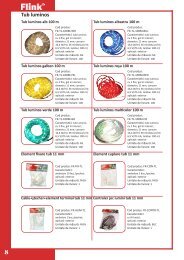Switch-Mode and Uninterruptible Power Supplies, Electronic Fuses ...
Switch-Mode and Uninterruptible Power Supplies, Electronic Fuses ...
Switch-Mode and Uninterruptible Power Supplies, Electronic Fuses ...
Create successful ePaper yourself
Turn your PDF publications into a flip-book with our unique Google optimized e-Paper software.
Glossary<br />
O<br />
Output characteristic curves<br />
Overvoltage category<br />
The output characteristic curves of power supply devices are determined by<br />
current <strong>and</strong> voltage. Unregulated devices do not have a current limit. In the<br />
case of an overload or short circuit, fuses or temperature switches are used to<br />
protect the device. Regulated devices are protected against overload <strong>and</strong> short<br />
circuits by means of various output characteristic curves. In this case, the system<br />
attempts to prevent any activation of fuses or temperature switches.<br />
The m<strong>and</strong>atory manual reset which follows an overload or short circuit can then<br />
be avoided. Common output characteristic curves include the hiccup mode, the<br />
foldback characteristic curve or the IU characteristic curve.<br />
➝ Hiccup mode, foldback characteristic curve, IU characteristic curve<br />
<strong>Power</strong> supply units are classified into overvoltage categories according to the<br />
immunity against mains surges <strong>and</strong> transient voltages.<br />
Glossary/Technical appendix<br />
P<br />
PELV (protective extra-low voltage)<br />
PFC (power factor correction)<br />
Pollution severity<br />
<strong>Power</strong>-boost or boost<br />
<strong>Power</strong> factor<br />
This is a functional DC voltage with secure isolation according to EN 50178. As<br />
with SELV, a reinforced or double insulation is used between the primary <strong>and</strong><br />
secondary sides. However, the secondary side is earthed.<br />
The power factor correction can be either passive or active in relation to power<br />
supply devices. The reactive power resulting from the bridge rectification puts<br />
a significant strain on the power supply network. The relatively poor power<br />
efficiency factor that results can be improved by using passive components<br />
(such as filters) or an active electronic mechanism. For switched-mode power<br />
supplies, PFC usually refers to the active variant of the power factor correction.<br />
<strong>Power</strong> factors of almost 1 can be reached when using an active PFC. Practically<br />
no reactive power is drawn from the mains supply network; therefore the strain<br />
on the mains network is relatively low.<br />
Pollution severity describes the environment <strong>and</strong> ambient conditions that a<br />
device requires in order for it to function smoothly. Significant environmental<br />
variables include condensation or air containing dust <strong>and</strong> oil.<br />
The power-boost function is the surge current h<strong>and</strong>ling capacity in the seconds<br />
to minutes range. This function is often required for starting up DC motors. DC<br />
motors have a high start-up current <strong>and</strong> often require several seconds before<br />
they have achieved their rated rotational speed. The power-boost function helps<br />
to optimise this start-up phase.<br />
The power factor is the ratio of reactive power to apparent power. It is an<br />
indicator of the device performance with respect to the load on the mains power<br />
network. Depending on the technology in use, the power factor for power<br />
supplies can be between 0.45 <strong>and</strong> nearly 1.<br />
W<br />
1366860000 – 2013<br />
W.11



